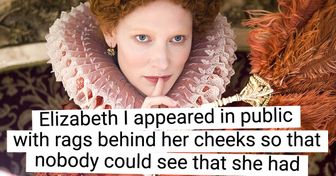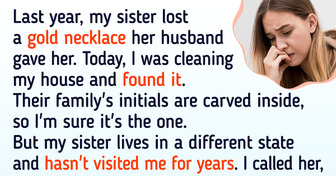The Victorian epoch named after Queen Victoria who ruled Great Britain from 1837 to 1901 is known for its high morals and strict rules, the breaking of which was condemned. Historians believe that the residents of the United Kingdom really changed for the better by the end of the 19th century. For example, they became kinder to animals, mentally ill people, and criminals.
At the same time, it was a period of sanctimony. Perhaps it’s hard to find a more controversial historical epoch and that’s why we at Bright Side couldn’t just pass by without finding out what life was like for the people of those times.
- The most usual item in a man’s wardrobe was called “inexpressible” and “unspeakable.” All because it was covering the part of the body that was considered vulgar. We are talking about trousers. The thing is that everything connected with legs and arms was considered inappropriate and instead of the usual words that we use to describe them today, people of those times would say “limbs.”
- Kids saw their parents rarely. They spent most of their time with nannies in their room. Children were supposed to get up early because staying in bed was considered a sign of laziness and sin. Many children saw their parents no more than once a day, but in some families, mothers and fathers still paid attention to their offspring: the mother taught them to read and write, and the father taught them Latin.
- Intellect wasn’t considered to be a strength for women. Some even believed that learning science was detrimental to the fragile girl’s body, especially to her reproductive system. Lady Caroline Lamb was recalling that she wasn’t taught to read or write until the age of 10 because her parents were afraid she would have nervous seizures. The father of the future mathematician, Jane Somerville, was worried about his daughter’s sanity when he found out she was reading at night.
- Girls were not told where kids come from or what awaits them after getting married. Writer Marie Stopes was born in 1880. Her mother was a suffragette, she graduated from university and was fighting for women’s rights but still, her daughter didn’t know anything about the marriage relationship. Marie got married at 31 and 2 years later, thanks to books, she realized she and her husband had never gone beyond the borders of a platonic relationship, which was wrong.
- In the 19th century, Britain was overtaken by Egyptomania. Wealthy English tourists, who flocked to Egypt, were trying to bring a real mummy back from that area as a souvenir. On their return from vacation, they threw parties that involved the unwrapping of their trophy. There is even a preserved photo of an invitation to one of these events — the unrolling of the mummy is scheduled for 2 AM.
- It was in Victorian England that Valentine’s Day appeared, in the format we know it today. Thanks to postal reform, Valentine’s cards could be sent anywhere in the country for just 1 penny. One year after the reform, 400,000 cards with declarations of love and sympathy were sent across Great Britain.
- Insulting Valentine’s Day cards became a kind of response to sentimental cards. They were sent to enemies and unwanted admirers. The content of these cards ranged from humorous to downright offensive. They were produced for almost any type of people that might be disliked by others — from annoying salespeople and homeowners to powerful employers. The cards might ridicule both the profession and the appearance of the recipient.
- Cards, in general, and especially Christmas ones, were very popular at those times. But the plots depicted on those cards were quite strange and even frightening: frogs who slipped over on the ice, people with birds’ heads, and a huge beetroot with a human head.
- In the middle of the 19th century, Gothic culture became popular, and it affected fashion. To make their faces pale, women would suck on lead pencils, drink vinegar, and tint their veins.
- Crinoline is one of the symbols of the Victorian epoch. It was introduced by the British man Charles Worth, who could be called the first professional clothing designer. Some inventor showed Worth a petticoat stretched over 3 hoops. The designer liked the idea and soon his clients approved of it too. This construction had a significant advantage — ladies didn’t have to wear multiple petticoats.
- The more voluminous the crinoline was, the more trendy it was considered. Its diameter could reach 70 inches. There were cases where girls died because of fluffy skirts. For example, in 1863, The Times newspaper reported on an accident that happened with a maid whose dress “distended by a crinoline” caught fire. There are also opposite cases. For example, in 1885, Sarah Ann Henley survived after falling from a 250-ft height. Some people believe she was saved by a crinoline that served as a parachute.
This is how crinoline looks under a skirt.
- In the ’70s of the 19th century, the crinoline was replaced by a bustle — a device in the shape of an overlay located just below the waist on the back panel of the upper part of the skirt, which formed a characteristic silhouette with a very convex lower body. Thanks to this fashionable thing, the waist seemed narrower, but the lady had to use numerous tricks in order to sit down.
- Thin waists were at the peak of fashion and ladies wore corsets to create a trendy silhouette. However, along with the waist, they would also strongly compress their internal organs, which resulted in creating problems with blood flow, causing women to faint. The appearance of the X-ray clearly showed what happens to the female body with the constant wearing of a corset and it saved the ladies of those times from this item.
- There is a legend saying that Victorians would tighten waist down to 18 inches, but according to researcher and collector of corsets Doris Langley Moore, these wardrobe items were almost never tightened down to more than 24 inches.
- The cylinder hat is one of the most recognizable male wardrobe items of Victorian England. However, this headgear was too warm, very uncomfortable, and impractical. It also required special care — it had to be ironed in a certain direction so that the hair on the hat would lay down correctly. It was also necessary to gently wipe it with a silk cloth if the person wearing it got into the rain. But at the same time, the top hat was the real sign of a gentleman’s respectability.
- So-called “fasting girls” were causing public unrest in the Victorian era. They were teenage girls who suddenly refused to eat and believed that they could live without food. They also were claiming to have magical powers. Doctors of that time attributed the strange behavior of the girls to fraud or hysteria. While modern historians are inclined to believe that young virgins could’ve been seriously ill: it was probably anorexia nervosa.
Would you like to visit Victorian England? What other epochs would you like to go to?












